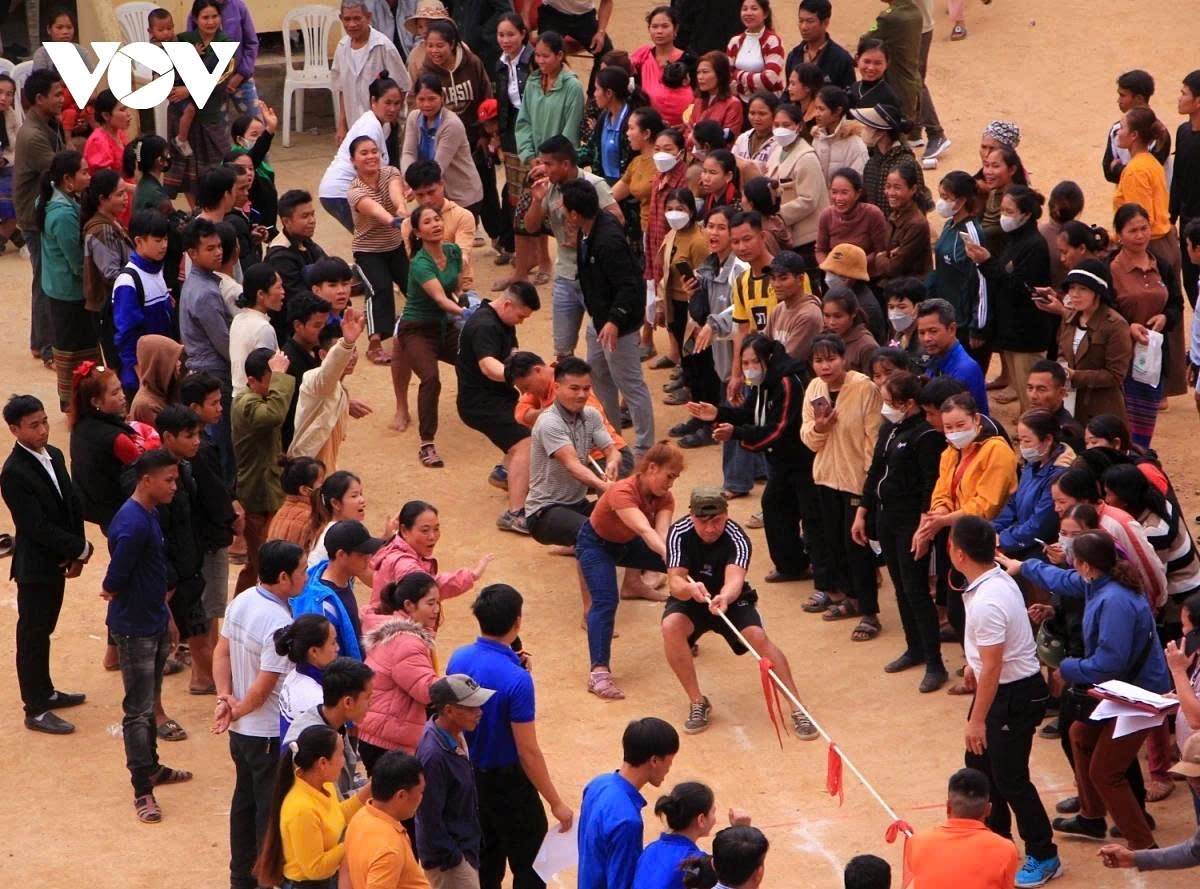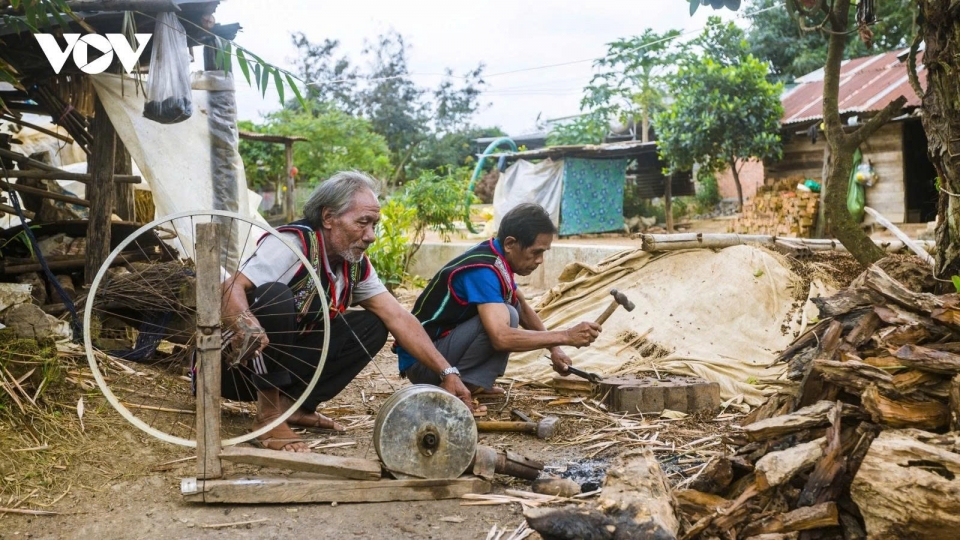Chut ethnic people preserve cultural identity, connecting the present and the future
VOV.VN - Throughout their history of survival and growth, the Chut ethnic people have created and safeguarded numerous distinctive material and spiritual cultural values, enriching Vietnam’s cultural heritage.

Today, the Chut in central Quang Tri province number about 1,860 households with more than 7,800 individuals, living mainly in remote, mountainous border communes where natural conditions and socio-economic circumstances remain challenging.
Traditionally, the Chut have lived in close harmony with nature, practicing shifting cultivation and nomadic lifestyles. For them, sacred forests and rocky mountains are not only places of survival but also the root of their culture.
Among the Chut subgroups, the Ruc are known for their unique customs and rituals, notably the Giang Son worship ceremony held annually in the ninth lunar month to pray for bountiful harvests and village peace. In the ceremony, the village elder throws two small bamboo sticks onto the blade of a knife to divine an omen, expressing sincerity to the deities and inviting forest spirits, earth gods, and ancestors to witness the event.
This strengthens community bonds and reminds the younger generation of their duty to protect the forest and preserve cultural identity.
According to artisan Dinh Van Cho from Hoa Luong village in former Hoa Son commune, now part of Kim Dien commune, Quảng Tri, although the Chut no longer live in deep forests and caves as they once did, their bond with the mountains and their roots remains alive in songs, rituals, and stories passed down through generations. Together with other elders and village heads, he has worked to collect lost folk songs, revive traditional festivals, and teach them to the youth, the key to safeguarding cultural heritage in the future.
Beyond spiritual rituals, the Chut also preserve many forms of folk music, dance, and instruments imbued with the soul of the mountains. During festivals, weddings, housewarming parties, and new rice celebrations, ethnic songs are performed alongside the Chơ-ra-bon – the only traditional musical instrument still preserved today – creating a distinctive cultural atmosphere.
Dinh Xuan Ban, from Yen Hop village now part of Kim Dien commune, Quang Tri, is regarded as a “living library” of Chut culture. He has participated in numerous cultural events to share traditional music, songs, rituals, and customs, while also encouraging the community to maintain their identity in daily life. He explained that although these cultural values have existed since his ancestors’ time, they risk disappearing unless collected and revived. By composing and passing on songs, he hopes younger generations will understand, cherish, and sustain the cultural heritage of the Chut.

Linking cultural preservation with tourism development is seen as an effective path forward, enabling the Chứt to safeguard their heritage while creating livelihoods. In Quang Tri, several localities have successfully tapped into these cultural assets to develop community-based, eco, and experiential tourism models.
Cultural preservation is not merely about holding onto the past, it is about connecting the past with the present and the future. For the Chut, this journey requires the participation of artisans, community members, and local authorities. As Quang Tri strives for sustainable development and improved living standards for ethnic minorities, preserving Chut culture alongside tourism development is not only a responsibility but also an opportunity for the community to reach out and connect with the wider world.
According to Mai Xuan Thanh, Deputy Director of the Quang Tri Department of Culture, Sports, and Tourism, the Chut possess a rich cultural heritage, from music and festivals to cuisine and village architecture. The province has established folk culture clubs in Chut communities, focusing particularly on the Ruc and Arem subgroups, whose populations are extremely small.
Thanks to growing cultural awareness, many intangible heritage values such as folk songs, dances, and music have been restored, performed, practiced, and widely passed down throughout the villages.




